'You'll never remove 100%': Facing hard facts while tackling Singapore's persistent rat population
From coffee shops in Hougang to the rubbish bins of Pasir Ris West, rats are a familiar sight. While residents and stall owners have largely learnt to live with the rodents, town councils say that they are stepping up with new campaigns and routines to control the rat population.
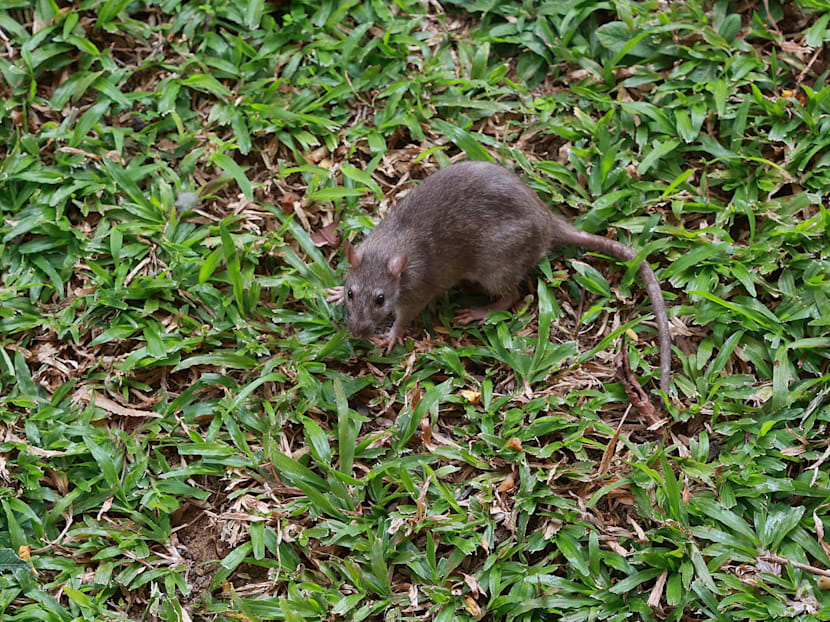
A rat seen along Elias Road in Pasir Ris on Jul 27, 2025. (Photo: CNA/Raj Nadarajan)

This audio is generated by an AI tool.
Every day for three years, Ms Hannah Kim Santiago’s 6am walk to her polytechnic from her home in Pasir Ris West meant sharing the pavement with furtive, grey "companions".
As a university student, she no longer takes that route but rats remain a fairly common sight for her and other members of her family.
"In the beginning, I was really shocked. Then I got so used to it, I didn't even know it was (an issue). That's how common it is here," the 22-year-old said.
Her father, Mr Shanker Santia, encounters rats scurrying through open spaces such as the pathways near Elias Mall in Pasir Ris at night.
These frequent rat sightings have affected his impression of how clean his estate is.
"When you see rats, you don't see them as a domestic animal ... When you see a pest, you don't feel good," the 55-year-old engineer said.
Spotting rats in her neighbourhood is nothing new either for Ms Chin Foong, a 60-year-old retiree, who lives at the Stratum condominium on Elias Road in Pasir Ris.
At least twice a week, she sees "very big" ones while walking her dog, which enjoys chasing after the rats.
"Especially near the McDonald's rubbish bin (at Elias Community Centre), there are many of them. And one time, a rat ran into my unit and it came to the balcony," Ms Foong said, adding that the incident left her rattled about keeping food out or uncovered at home.
A CNA TODAY map of reports in Pasir Ris West, compiled from crowdsourced feedback and ground reporting, received 27 reports of rat sightings, with most residents having spotted rodents near – or even in – their homes.
Over at Pasir Ris West, Member of Parliament (MP) Indranee Rajah announced on Aug 31 a multi-agency RatFix! Campaign to tackle the issue. She is the MP for Pasir Ris-Changi Group Representation Constituency (GRC).
It is not the only locality grappling with rodents.
Last year, CNA's Talking Point collated an interactive map highlighting rat hotspots based on public feedback, identifying Tampines and Hougang as two areas that received most of the reports.
In a fact sheet on public cleanliness and hygiene published on Aug 27, the National Environment Agency (NEA) said it had detected an average of 5,400 rat burrows per cycle across Singapore in the first half of 2025. This is almost double the 2,800 burrows recorded in the same period last year.
Rat burrow numbers are counted by NEA on a two-month surveillance cycle.
To tackle the problem, NEA and the Singapore Food Agency (SFA) said they jointly took enforcement action against about 480 errant premises owners for rat-related lapses in the first half of this year, mostly for poor refuse management – up from 380 for the same period a year ago.
Town councils and grassroots organisations have also stepped up their responses to address rat-related feedback from residents using new technologies such as thermal sensing devices, as well as educating residents on proper food waste disposal to avoid attracting such pests.
As rat sightings and burrow numbers rise across estates, CNA TODAY spoke to residents, business owners and town councils in several rat hotspots to examine how the rat situation has evolved and what would make a difference in keeping rodents in check.
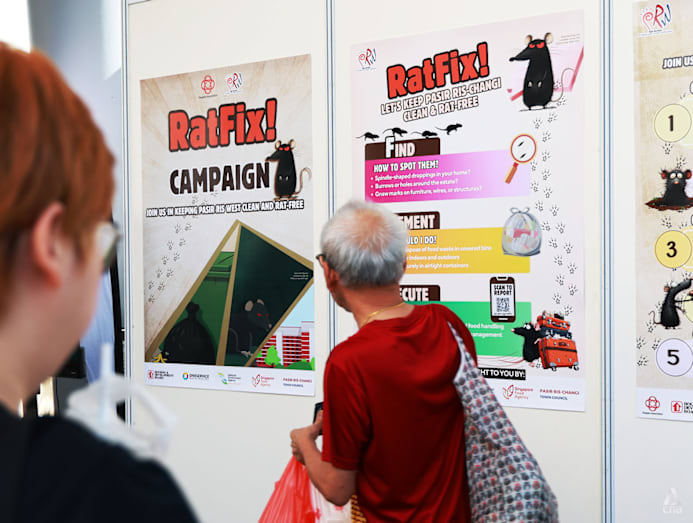
LIVING AND WORKING WITH RATS
In the Pasir Ris West, Tampines and Hougang estates, many residents said that rat activity is common, though for most of these residents, it does not significantly disrupt daily life.
A rat darted past during one resident's interview with CNA TODAY in Hougang, for instance.
However, for business owners, especially those running food-and-beverage stalls, concerns about hygiene, safety and customer confidence are more acute.
Mr Ben Loh, 58, who runs a convenience store in Elias Mall, said that he used to see as many as six rats a week on the grass patch behind Pasir Ris Elias Community Club.
The situation has improved over the past two months after pest control firms filled up burrows, he noticed.
"It used to be a lot. I would always see the rats every night ... Of course, reducing the rat population (even further) would be good, but there's no way you'll be able to remove 100 per cent of the rats," Mr Loh said in Mandarin.
Agreeing, Ms Joyce Chia, 61, a seamstress at Elias Mall, said she has noticed fewer rats when she is closing the stall since rat burrows around Elias Mall have been treated, though there is occasionally a foul smell from the dead rats.
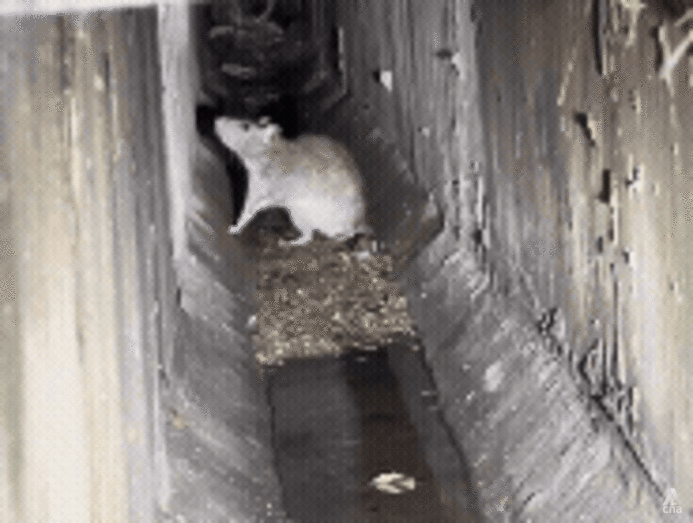
While Mr Loh and Ms Chia have seen some improvements in Pasir Ris West, other business owners said that rats are a perennial challenge that is not just unpleasant but costly, from having to replace stock gnawed on by the rodents to taking their own measures to keep them at bay.
At Block 317 in Hougang, Mrs Hadijah Deen, who runs a small convenience store, said that she had to discard some products, including chocolate bars and a packet of milk powder that had holes, after she spotted rats inside and around her shop.
At Our Tampines Hub, Mr Daniel Loh, 44, spent around S$150 to install closed-circuit television cameras to monitor rat activity and spikes to deter rodents from getting to his Japanese food stall at the hawker centre.
"There are many rats that run on top (of the stall) and it's too open, so it's very tricky. The rats can get across to all the stalls and the mall through the wires and the piping, even after you close the shutters," he said.
He added that the situation has improved with the hawker centre's current pest control company, which provides updates on the lures, poison and types of rats caught. These have reassured stallholders that the problem is being closely tracked.

Ms Su Thwe, 48, a hawker who has been serving up Hokkien mee in Hougang for the past 20 years, said she used to see many more rats coming from the burrows in grassy areas nearby, but things have improved over the past two months.
“It's all about keeping things clean. We store everything properly. You see, all our ingredients are sealed in containers. That way, rats can't get in,” she said in Mandarin.
However, 72-year-old hawker Luo Da Pao said that keeping one's stall clean, or a business owner's other pest control efforts, are not enough when rats enter the store from the ceiling.
"They get in at night. Sometimes, we can see them in the afternoon. I see them three or four times a week," Mr Luo said, claiming that some of them were almost as long as his forearm.
Mr Joginder Gulati, 63, who operates an Indian food stall at the Our Tampines Hub hawker centre, said there is the worry that rat sightings in the vicinity would result in customers unfairly shunning businesses there.
"Everybody will be worried about rats, because people will get sick and fewer people will come (to eat)," Mr Joginder added. He has had his stall for eight years.
His concerns are not unfounded, with residents across the island admitting that they have avoided eateries after they spotted a rat in the area.
Hougang resident Leonard Lim has spotted rats darting between stalls at one of the coffee shops near his home, and occasionally even entering them. Mr Lim, a community care professional in his 50s who moved into the area 18 months ago, recounted one such unsettling experience while eating with his son.
"My son was alarmed, seeing the rat (running by) so fast, and it's quite big," he said, adding that the rats' proximity to the stalls left him with some concerns.
Since then, he seldom visits the coffee shop despite noticing that stall owners have set up traps around their premises.
For some residents, encounters with rats have had less impact on their food choices but have affected the way they conduct their daily lives, which includes choosing not to walk near certain areas.
Ms Jisha Gopalakrishnan Nair said her encounter with rats in Hougang was "very scary", after she accidentally stepped on a baby rat while walking in the park.
The 38-year-old engineer described feeling something soft underfoot as she crossed the path and said the skin-crawling sensation lingered long after the incident.
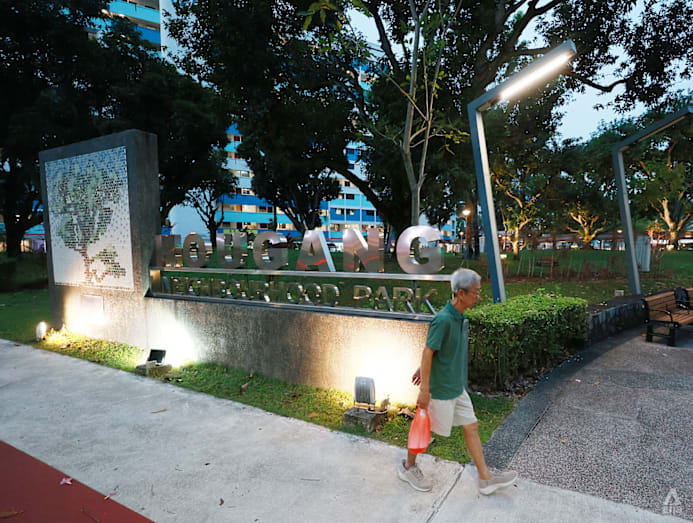
Since the start of 2025, Ms Tania Chua has seen rats about 10 times in her Pasir Ris West neighbourhood, including around the bike racks at the void deck of Block 715, in and above the green bins around the block and multiple times at the central refuse chute on the ground floor.
"My family has called the town council a few times to update them about the rat situation but each time, it seems like there are still many rats roaming around the neighbourhood," the 21-year-old human resource executive said.
"We'll just avoid certain areas, especially when walking our dogs at the park or around the estate at night, or we'll turn on our phones' torch light beforehand, because we have seen rats run across the path (at the park) many times, too."
Polytechnic student Rayen Peh, 17, who often frequents Hougang Neighbourhood Park, sees rats in the area about three times a week but is not too bothered by them. However, he hopes that the authorities can explore more humane ways of managing the rodent problem.
"Maybe they can try to catch the rats but not kill them. They're still animals, they have lives like us humans," he said. "We can improve cleanliness around neighbourhood parks and make sure there's no litter."
Other residents agreed that beyond what the authorities can do, residents themselves have a part to play in keeping rats at bay.
Ms Zheng Ning, 29, who works in the beauty and wellness industry, said that she now rarely sees rats in Pasir Ris, but hopes fellow residents keep the environment clean, especially when it comes to food waste, to avoid attracting rats.
"Even if the town council does so many things, if people don't take care of the environment, it's still going to be the same.
"When people throw rubbish, they can tie the plastic bag. I think that's quite important, because most people just throw it in and leave it like that, with a lot of spillage," she added.
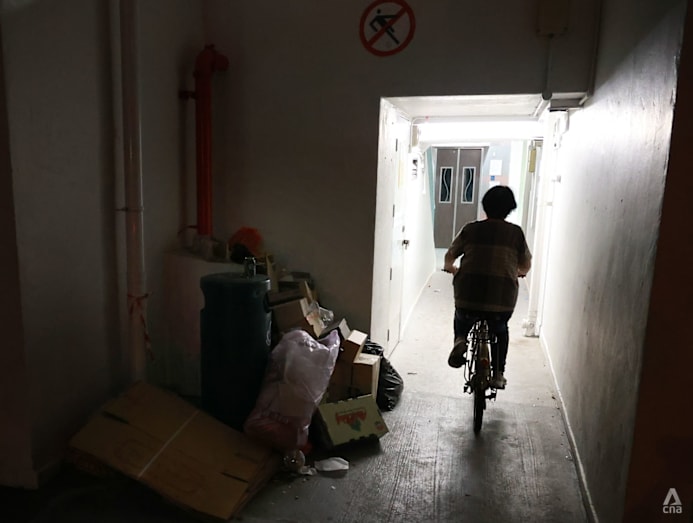
WHAT THE AUTHORITIES ARE DOING
Since April this year, NEA has ramped up its enforcement against premises managers and owners whose poor practices provide fertile ground for infestations. These include lapses in refuse management, defects in refuse handling facilities and the presence of burrows or nests.
Enforcement is only one part of the equation, the agency emphasised.
"Relying on enforcement alone would be insufficient to mitigate rat infestations in the longer term," NEA said, pointing to the need for "upstream measures" such as proper refuse management and regular housekeeping to cut off food sources and areas where rats can hide and rest.
SFA, which oversees food safety at licensed establishments, said that its officers conduct regular safety inspections, reminding food operators to store ingredients in covered containers, dispose of rubbish properly and ensure the establishments do not have food scraps.
In response to CNA TODAY's queries, SFA said it had carried out more than 700 inspections across the hotspots of Pasir Ris West, Hougang and Tampines since 2024. None of these checks uncovered rat-related lapses, but enforcement actions were taken over other food safety violations.
SFA also works closely with NEA and the respective town councils to carry out joint inspections, aiming to reinforce proper refuse handling and housekeeping as key preventative measures.
Against this backdrop, town councils have adopted tailored approaches in their own constituencies.
The Pasir Ris West RatFix! campaign will be guided by "Five Cs": Cutting food sources; clearing rat burrows; culling; communication to stakeholders; and coordination among agencies, residents and stakeholders.
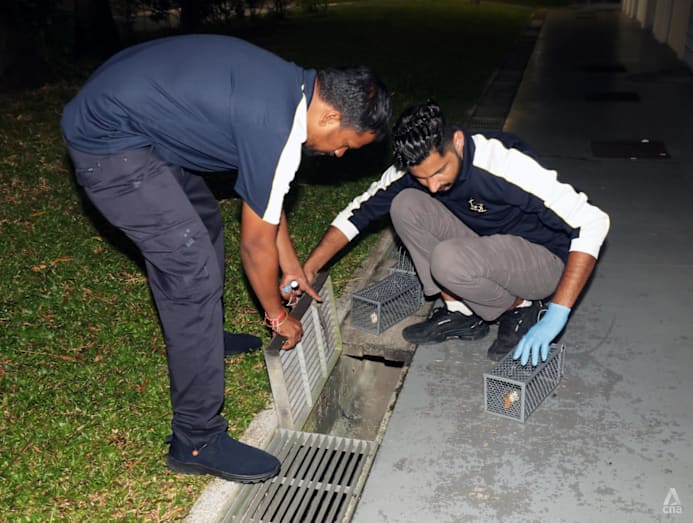
Speaking at the campaign's launch, Ms Indranee said she wanted to move away from traditional "reactive" approaches to trapping rats and move towards tackling food sources and disturbed burrows caused by construction.
The campaign, which taps the collective expertise of the Housing and Development Board (HDB), Municipal Services Office (MSO), NEA, SFA, Pasir Ris-Changi Town Council and grassroots organisations, is one that Ms Indranee hopes could serve as a pilot for a national strategy in handling rats.
Ms Kwok Wei Kin, the general manager of Pasir Ris-Changi Town Council, told CNA TODAY that rat-related feedback had dropped from 32 cases around the Chinese New Year festivities to 24 instances of such feedback in April and six items of feedback last month.
While burrow sightings fluctuate with construction and food sources, fewer burrows are emerging where interventions are sustained, Ms Kwok said.
As for its current efforts, the town council conducts weekly burrow treatments, including night inspections, deploying traps and using thermal sensing devices to detect rodent activity.
There have also been infrastructural improvements in the estate, including adding a concrete base over blue recycling bins to prevent gnawing by rats and fitting metal mesh over drain openings near central refuse chutes to limit their access to food waste.
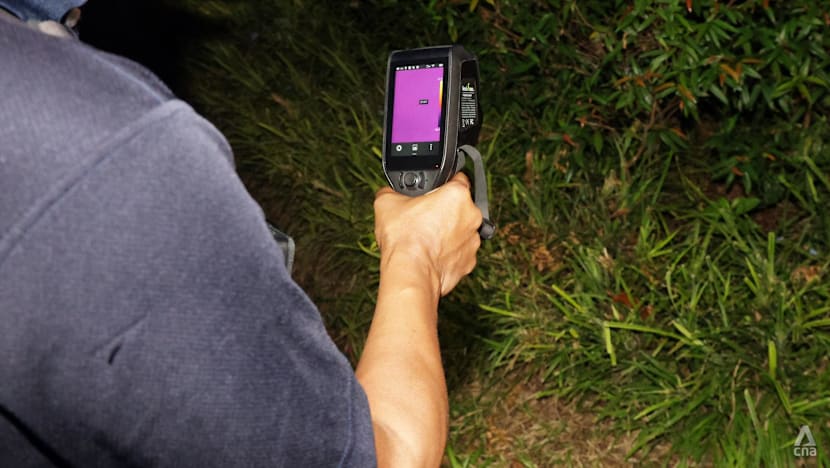
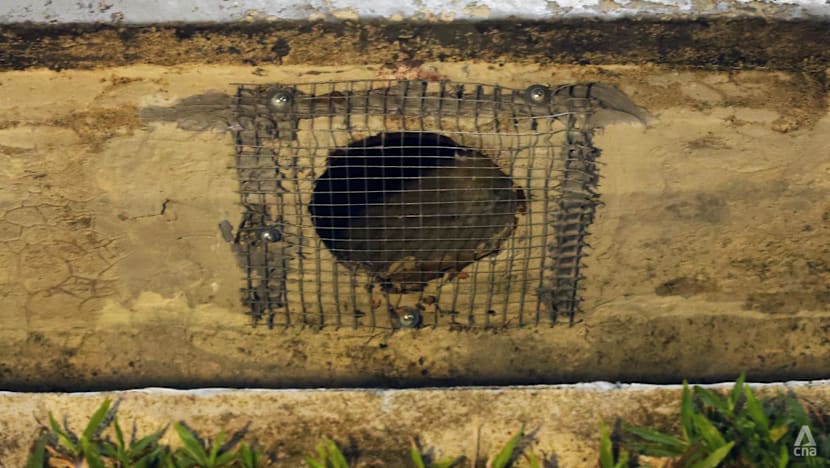
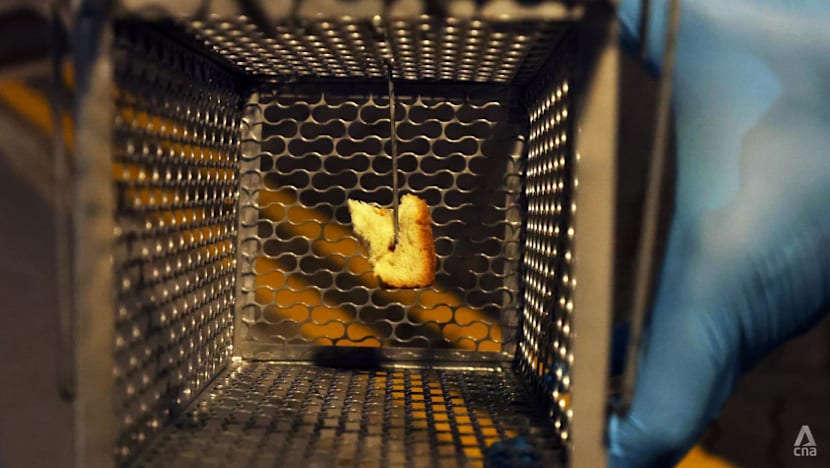
In Tampines, Mr Jeff Cheang, senior manager of communications and public relations at the town council, said six pest control teams have been deployed town-wide to step up inspections and treatments.
Burrows are checked and treated daily on weekdays, and targeted culling exercises are carried out where necessary.
Mr Cheang stressed that tackling rodents requires "consistent effort from all stakeholders" including food outlets, supermarkets, construction site managers and residents.
Dr Charlene Chen, MP for Tampines GRC and co-chair of the Tampines Town Council, told CNA TODAY that she receives reports of rat sightings mainly through house visits, mostly regarding areas near construction sites, car parks and neighbourhood centres.
At some construction sites, the Land Transport Authority and town council have ongoing rodent control measures and have put up posters about improper waste disposal, she added.
"In my two years serving in Tampines, rat-related feedback given directly to me has reduced. The town council will continue to proactively educate residents on proper waste disposal and implement rodent control measures," Dr Chen said.
The Aljunied-Hougang Town Council did not respond to CNA TODAY's request for comment.
TACKLING RATS A "MARATHON"
Beyond these "hotspot" towns, the fight against rodents is mirrored across other town councils, which are all facing broadly similar challenges.
In Sengkang, a representative from the town council told CNA TODAY that rodent activity has picked up in recent months, linked to nearby construction works.
Weekly inspections and burrow treatments are carried out by their pest control operator, with NEA conducting its own bimonthly inspections at random clusters.
The representative added that the town council is experimenting with new technologies to rid the neighbourhoods of the rodents.
Thermal imaging cameras are being piloted to detect burrows and pinpoint hidden hotspots, while a Vitamin D3-based rodenticide – said to be potentially more effective than traditional anti-coagulants – is being tested.
An area that has seen some success in addressing its rat-related issues is Ang Mo Kio Central, which is one of four areas of concern flagged by NEA because of high trade activity and lapses in refuse management.
NEA did not identify the three other areas it is monitoring for a period of at least four months but said it had plans to increase the number.
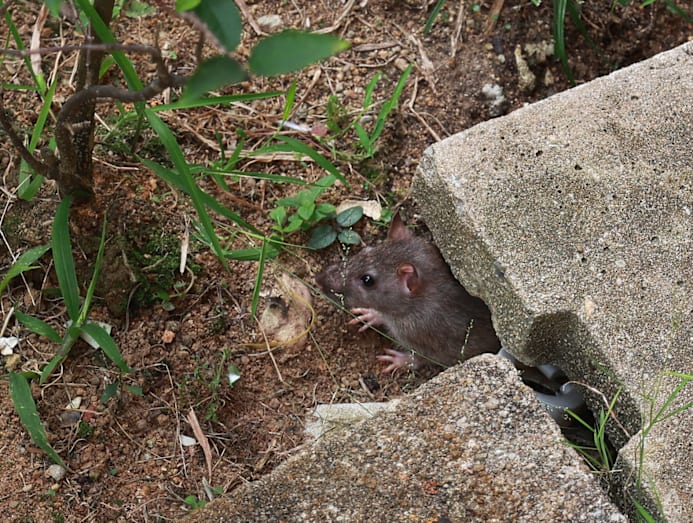
At Ang Mo Kio Central, NEA said the number of refuse management lapses in that area had dropped by 60 per cent, due to a joint push with the town council, grassroots advisers and trade premises to strengthen waste handling and hygiene.
Mr Henry Kwek Hian Chuan, the Ang Mo Kio Town Council's chairperson and MP for Kebun Baru, said that Ang Mo Kio Central had received around 100 reports about rats in 2024. This number has dropped to fewer than 50 for the first eight months of this year.
He added that the area was a rat hotspot because of its high human traffic and large number of food-and-beverage outlets, so the town council responded accordingly.
"Let's say you have a bubble tea shop that opens up to a particular time. We have a regular cleaning schedule, but we factor this in to try and make sure that our last run to clean up the trash in that area is after the (shop's) operating hours.
"You need to go to that level of resolution to try to remove the food source," Mr Kwek revealed.
He added, however, that constant refreshers on proper refuse management have to be given due to high manpower turnover.
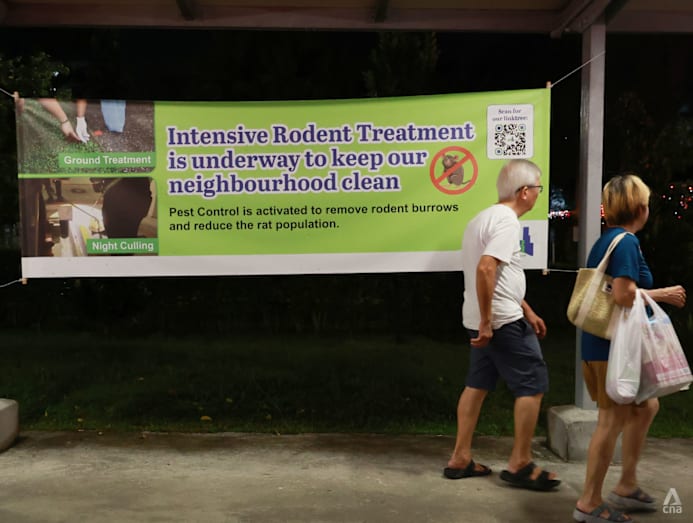
Mr Kwek said the town council has also taken steps to ensure that its campaign against rodents has minimal impact on other animals such as community cats.
"It's truly a marathon. It's one of the things we must constantly be vigilant on," he added. "Given how fast rats procreate, any success can only be sustained if everybody does their part."
"I think this will still be a topic 10 years later, but it's how we can change the practices, so we are always more proactive than less."
Additional reporting by Eunice Sng.














